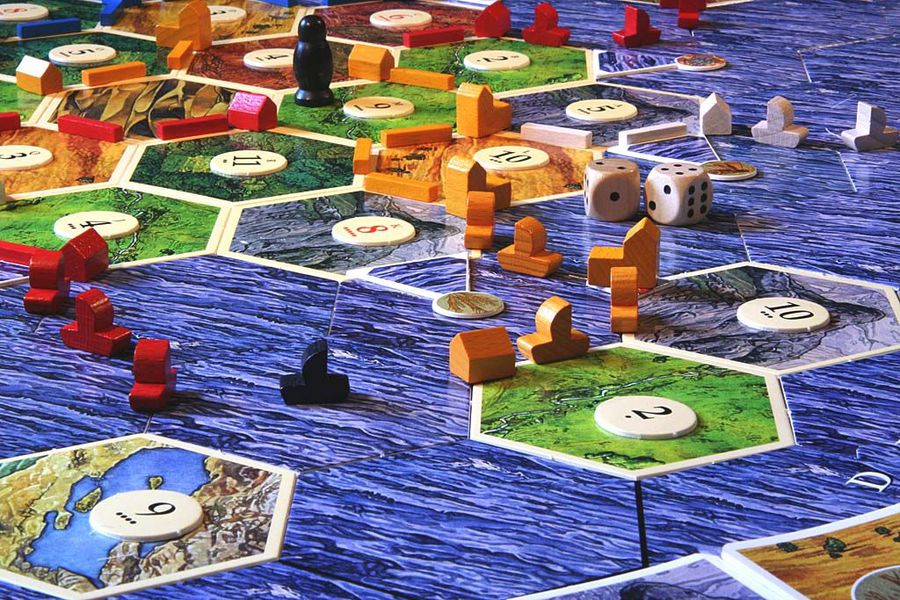

It steals resources from nearby ships and prevents more ships from being built. Buccaneer works similarly to a robber, but he can only move on sea tiles (I’m stating the obvious here). When a seven is thrown, the player has the option to move the robber or the pirate. This works similarly to before, but now roads and ships can both be counted together to form a trade route. The concept of sea routes also renames “The Longest Road” into “Longest Trade Route”. A sea route that is not yet completed, can have its last ship moved once a turn, thus giving more flexibility and more options to react to other players’ moves. Sea routes must start and end with a settlement – you can’t build from the sea route to the road directly. Using one wood and one wool to build (thus making wool much more valuable than in base game), ships act as roads, only that they are built on the sea: between two sea tiles or between one sea and one land tile (coast). The box contains 30 new terrain tiles (19 of those sea tiles) with accompanying number chits, 15 ships per player, 50 victory chits, 10 harbors, 6 frame pieces, and the rule book.

Learn more about the base game – read my review of Catan Special scenarios are provided and explained in the rule book.

It achieves this by adding new terrain tiles and ships. Settlers of Catan: Seafarers expansion revolves around sea travel, exploring new islands and ship routes. But, after you’ve played the base game a dozen times, eventually a desire for something more will emerge. History has proven this to be the right decision. The expansion was originally designed together with the base game, but it was later decided to separate the two in order to keep the base game more accessible. Seafarers were released in 1997 and are the first official expansion for Settlers Of Catan. What does it bring to Catan, how does it play, and is it worth it? Introduction to Settlers of Catan: Seafarers – Expansion Review This article is the review of Settlers of Catan: Seafarers expansion.


 0 kommentar(er)
0 kommentar(er)
